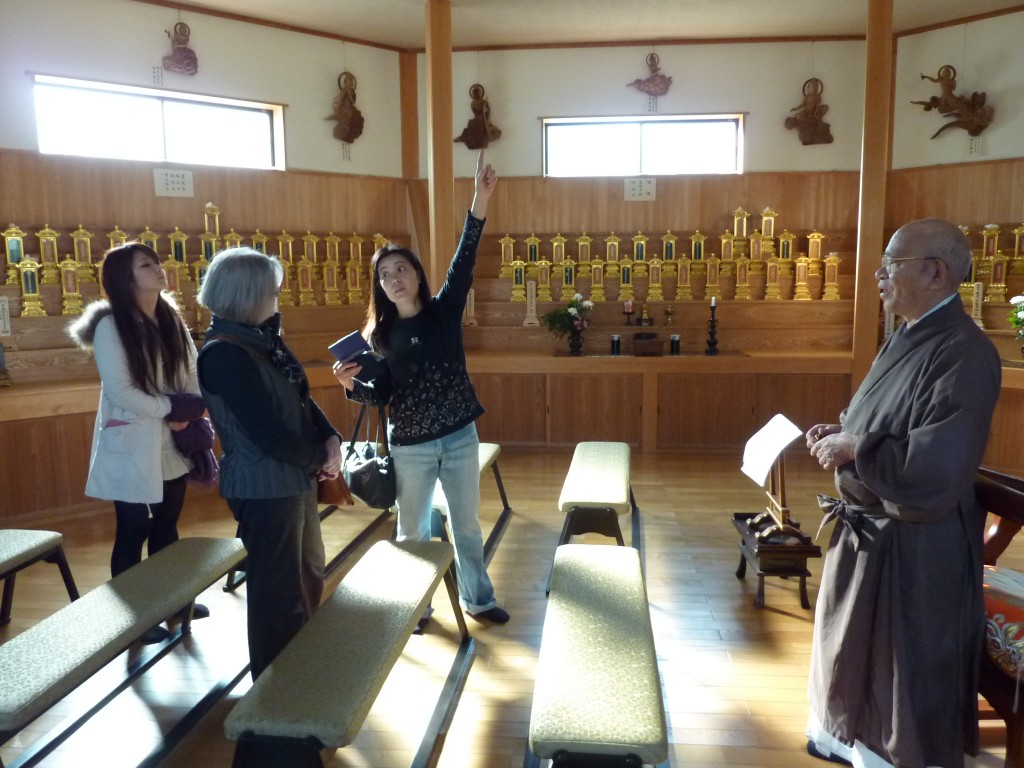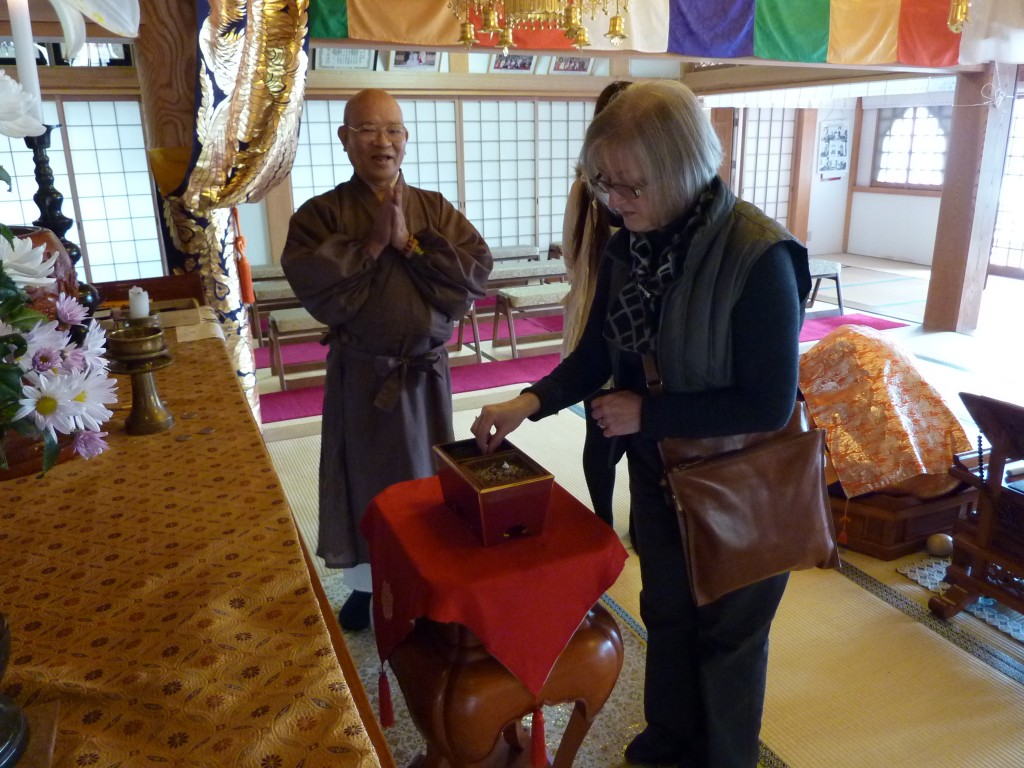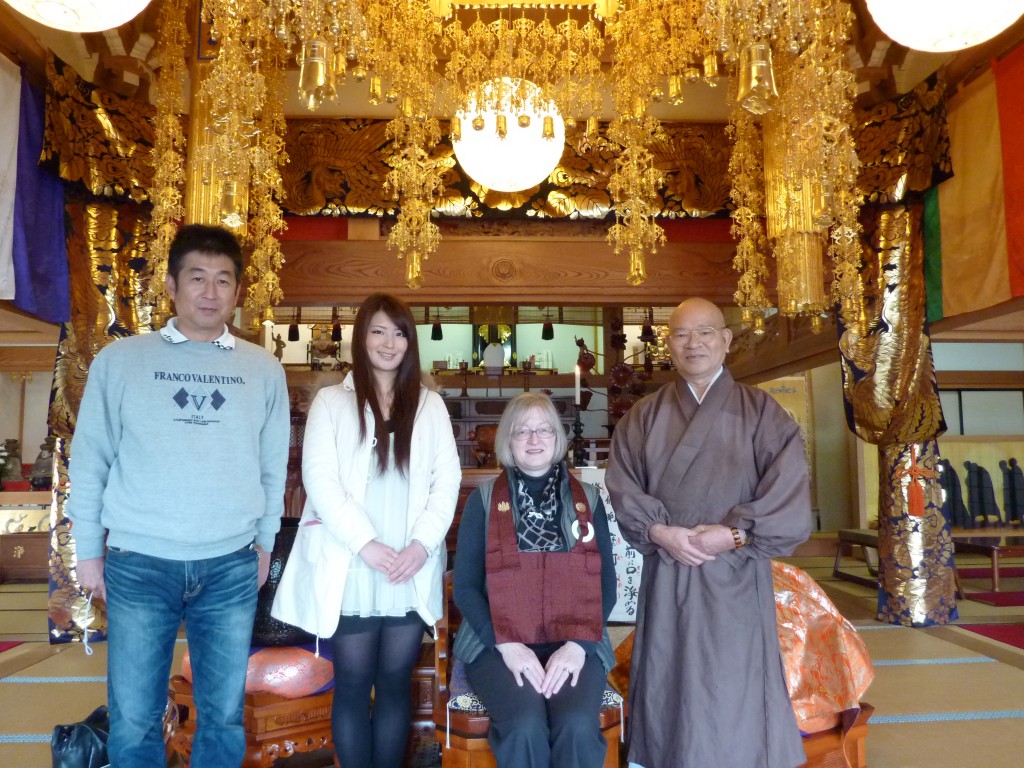As is custom in Japan, Akemi slides the entrance door open and calls out kon nichi wa. Mikio, Saki and I have stopped to meet Akemi’s father, Adachi Jikai (osho-san) , who is the priest at Tokujyo a smaller temple within the Toyokawa Inari and Toyokawa Station neighbourhood. As we enter and remove our shoes, her father rises from behind the table where he has been at work in a small tatami room and comes to greet us.
He shows us through this small but exquisite building to the main worship hall, an octagonal space of blond wood redolent with the scent of cedar and kou (incense).
I am stunned by the radiance of the room. Opulent draperies, colourful banners and golden bells glow in the natural light streaming through the surrounding shoji screens and clerestory windows, a startling contrast to the dark and deeply shadowed Japanese temples and shrines I have visited.
Osho-san shows me the sheet music from which the worshipers chant Goeika (sacred poems). He sits and sings for me in his honeyed baritone voice. Reading over his shoulder I follow the notation, and I am reminded of my grandfather singing Mennonite hymns from hand-copied texts in the Ziffersystem.
Then he sprinkles sandalwood in the burner to our left and motions for me to do the same. He watches, his hands held in prayer and I follow his lead.
As in most sacred places I visit, I have no requests. Only a heart welling with inarticulate gratitude for this ichi-go ichi-e (one time, one meeting) and with our parting imminent, the inchoate longing to return.
Afterwards he drapes a maroon rakusu marked with the temple’s symbol around my neck. Mikio tells me the vestment is a special one for those who worship here frequently and learn Goeika. As we arrange ourselves for photos, Akemi observes that now I look like a Japanese Buddhist.
Before we fetch our shoes and hurry off to Toyokawa Inari, Adachi offers small gifts: talismans and coins. Sayonara. And like the evanescent moment, we are gone.



